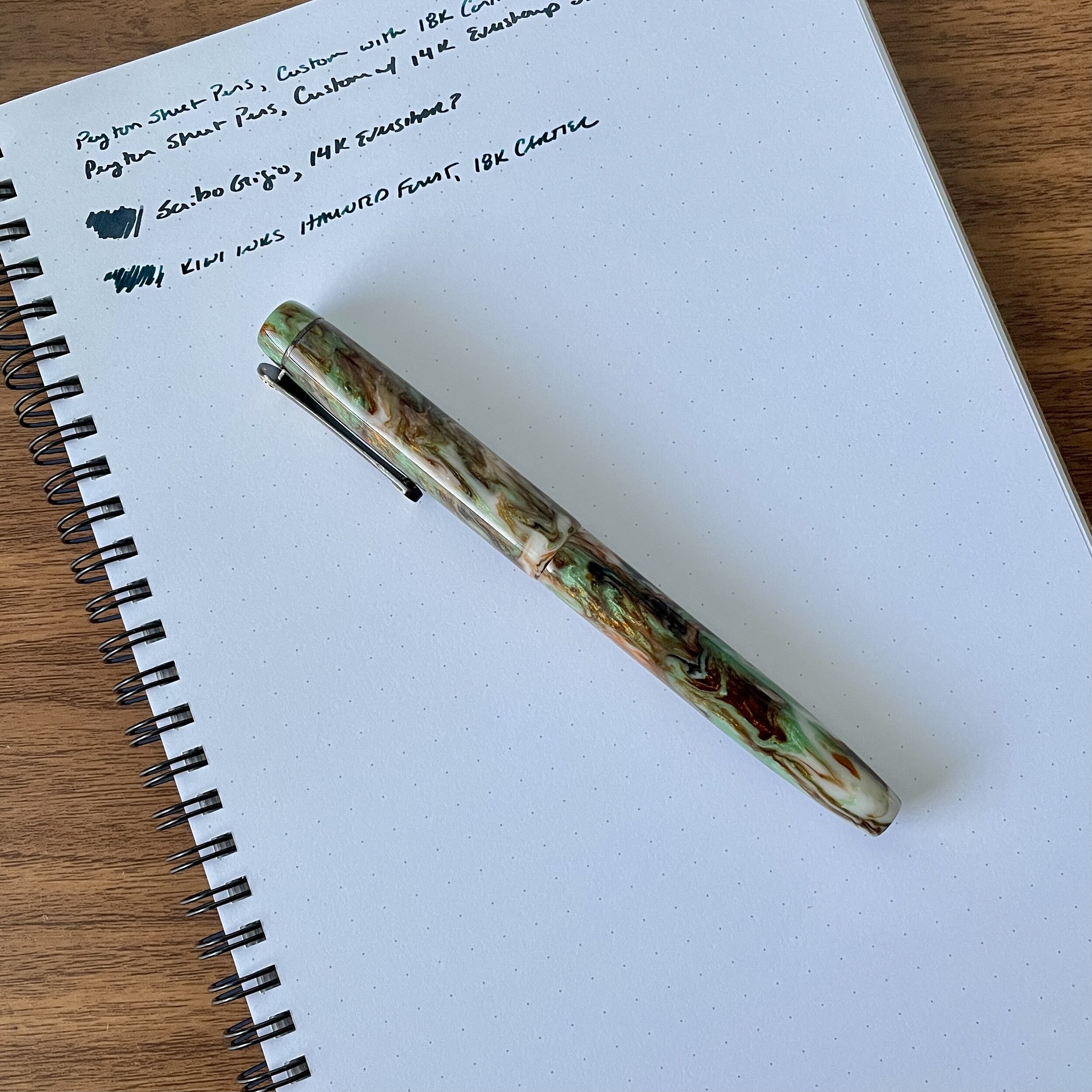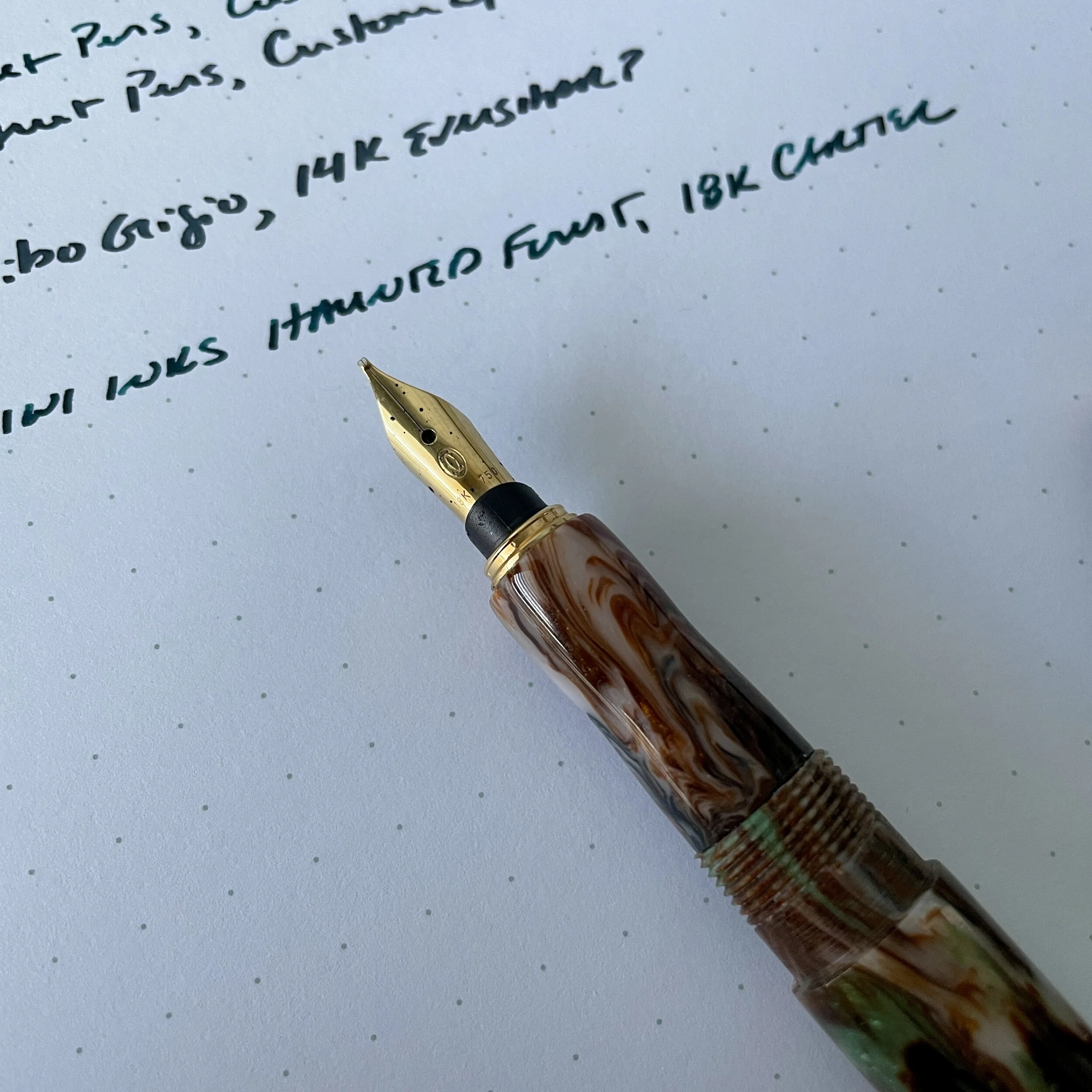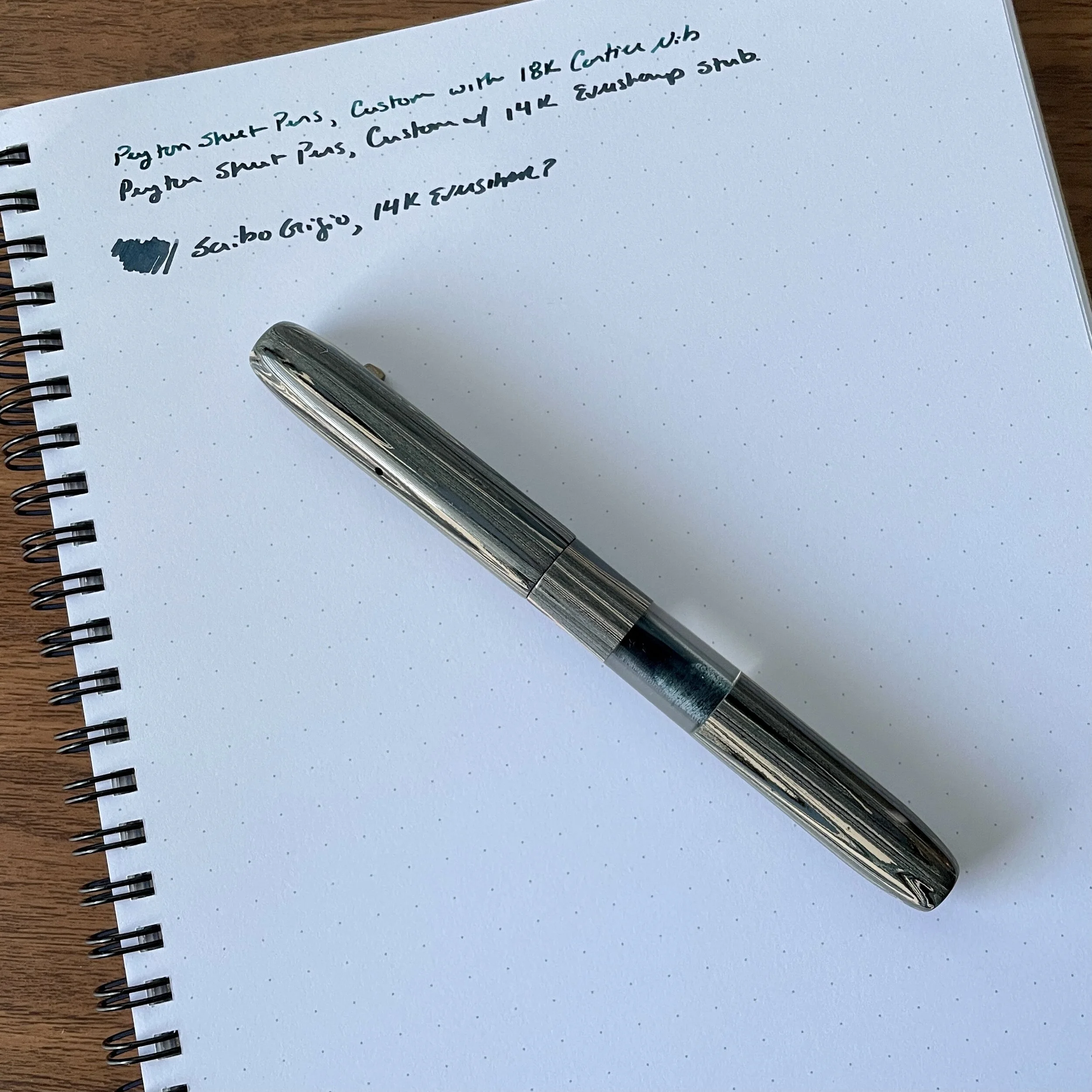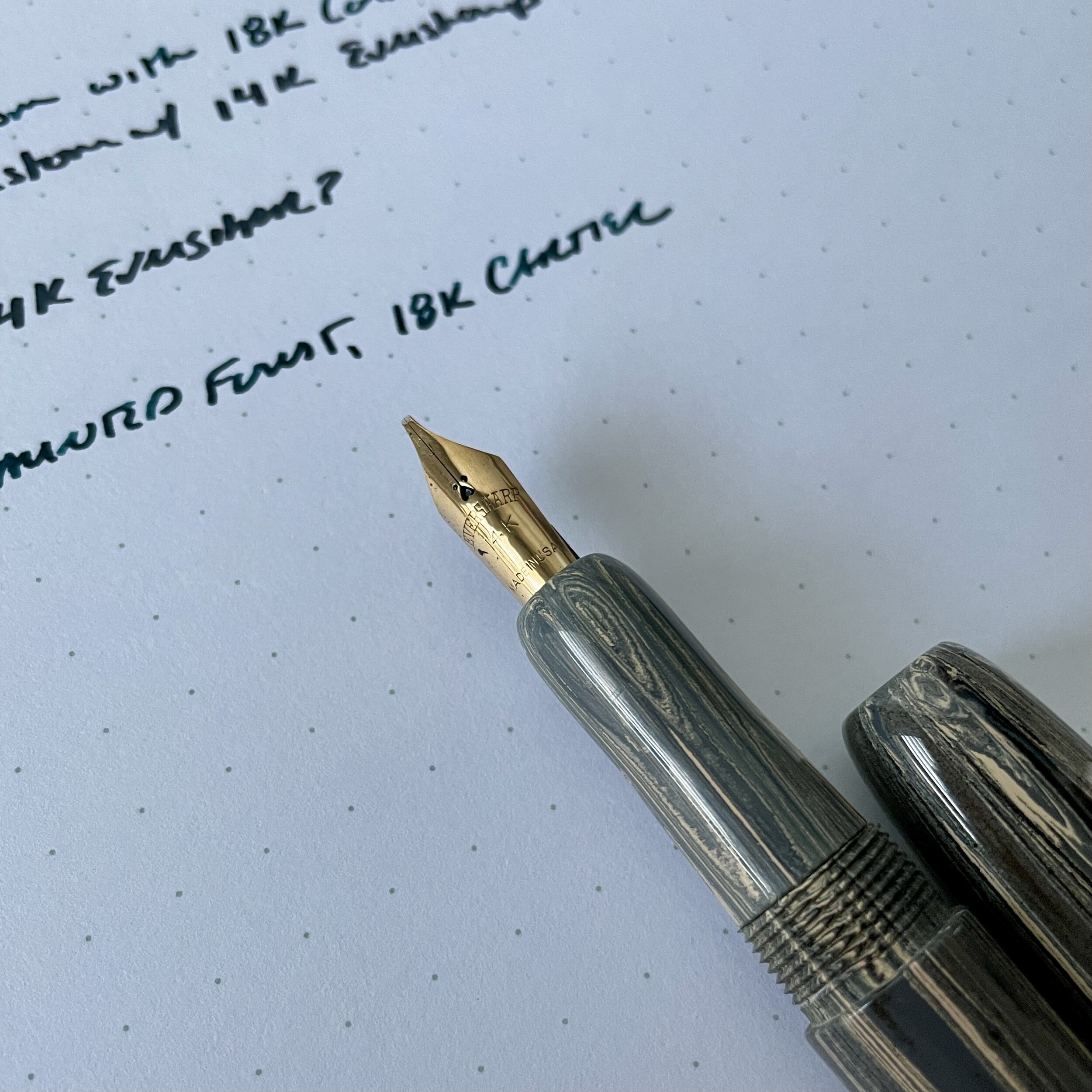Many pen enthusiasts love the styling of vintage pens, enjoy tinkering with their unique (and sometimes temperamental) filling systems, and look forward to the routine maintenance and occasional repair as part of a vintage pen’s charm. Others focus on the nibs, preferring the performance and feel of vintage 14k and 18k nibs that often write (much) better than their modern equivalents, sometimes at a lower price point. If, like me, you fall into the latter group, there’s an option that doesn’t get as much attention as it should: using vintage nibs in a modern pen body, which allows you to avoid certain inconveniences of vintage while enjoying the unique writing experience.
Custom pens from my collection. On the left are the two Peyton Street Pens customs with vintage nibs that I picked up at this year’s San Francisco Pen Show (discussed further shown below). On the far right is a Newton Shinobi; Second from right is a Scriptorium Balladeer with a custom Architect nib from The Nib Tailor.
There are a couple of different ways you can go about using vintage fountain pen nibs in a modern pen. A few years back, my friend Leigh Reyes, who regularly scouts pen shows for loose vintage nibs, wrote an excellent article on fitting vintage nibs into modern pens such as Kaweco Sports and Franklin-Christoph Model 45s. This approach takes some leg work, as you have to pay close attention to things like stress and wear on the nib over time if the modern housing, feed, and/or section aren’t a perfect fit for the nib. (Please read the article and do as much research as you can before you try this - as Leigh points out, it’s possible to damage both your pen and your nib if you’re not careful.)
The other option is having a brand new pen or section custom made to fit a specific vintage nib (or, like my friend Thomas, having one pen made with multiple different sections sized to fit different nibs). While you will have to discuss with your penmaker of choice whether this is even a possibility, Shawn Newton (Newton Pens) has done this sort of work in the past, as has Jonathon Brooks of Carolina Pen Company. Teri Morris of Peyton Street Pens also regularly makes pen bodies to house vintage nibs from companies such as Sheaffer, Cartier, and Eversharp.
When I was in San Francisco, I had the opportunity to visit the Peyton Street Pens table and picked up two new additions to my collection that feature excellent vintage gold nibs: an 18k Cartier nib ground to a smooth cursive italic, and a 14k Eversharp stub that’s slightly springy in a way you only really see in vintage nibs. Both are on original feeds, so I’ve experienced zero issues with ink flow. Peyton Street Pens currently has some similar offerings for sale in the “Peyton Street Exclusives” section of their store.
Many vintage nibs are set to write much wetter than what modern pen users are accustomed to, especially if you’ve been using standard stainless steel nibs from JoWo and Bock. For the best experience, be sure to use fountain pen friendly paper. Writing sample shown here is on a Write Notepads Spiral Notebook
As is always the case with vintage anything, your mileage may vary based on the specific pen and/or nib at issue. I highly recommend visiting a pen show, if circumstances allow, so that you can inspect and/or write with the nib you’re considering. Of course, this may be impossible when you’re buying a loose nib that’s not currently installed in a pen, or when you’re asking someone to build a custom pen for you. Often, however, penmakers at shows will have examples of their work at their tables, and will work with you if you have problems with your pen. Sometimes it takes a few tweaks and adjustments to get things writing perfectly.
Further Reading
I’ve previously written several posts on dabbling in the vintage world. I’m far from an expert, but have owned many vintage pens over the years, and I enjoy talking about them from the perspective of someone who doesn’t necessarily “collect,” but rather uses them for everyday writing. Several years ago I started a multi-part “Vintage Pen Primer” series, which lay dormant until today. I you enjoyed this post, you can read the previous articles here: Vintage Pen Primer, Part I; Part II (The Parker 51); Part III (Inks for Vintage Pens); Part IV (The Parker Vacumatic).
Disclaimer: This post does not contain paid affiliate links. Going forward, T.G.S is supported entirely by purchases from the T.G.S. Curated Shop and the T.G.S. Patreon Program, which offers access to online meetups, exclusive discounts and pre-orders, and more!



